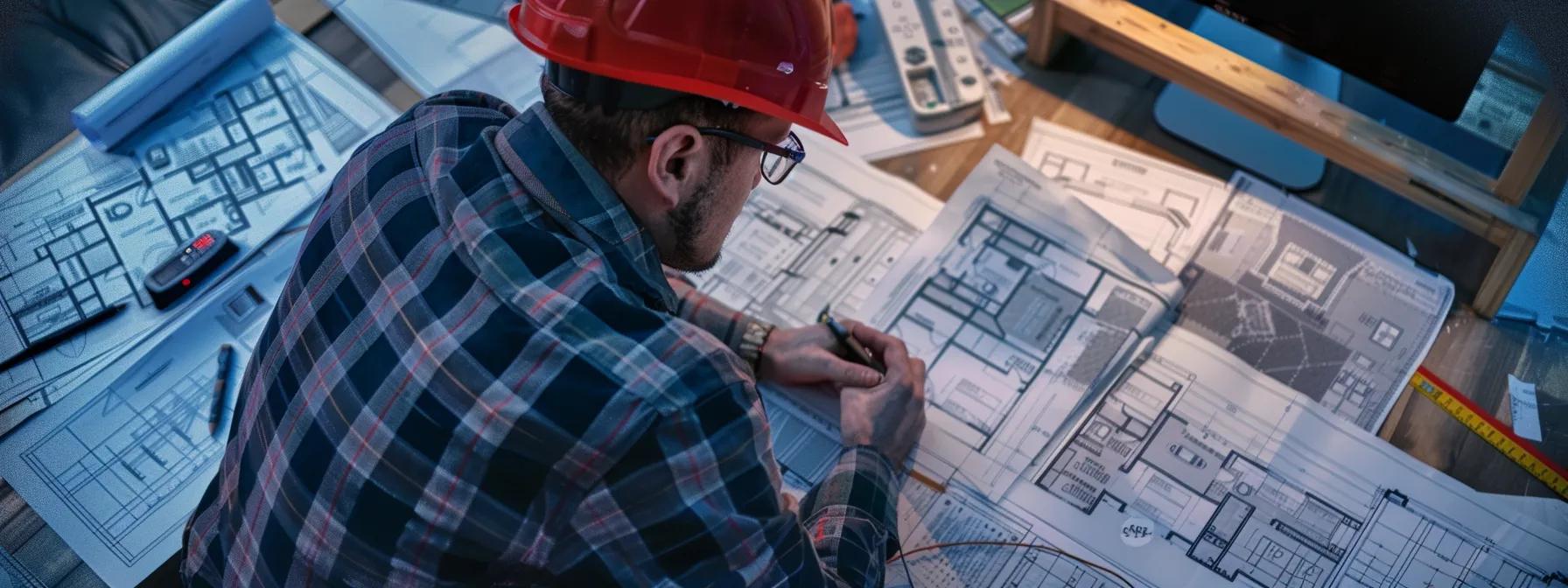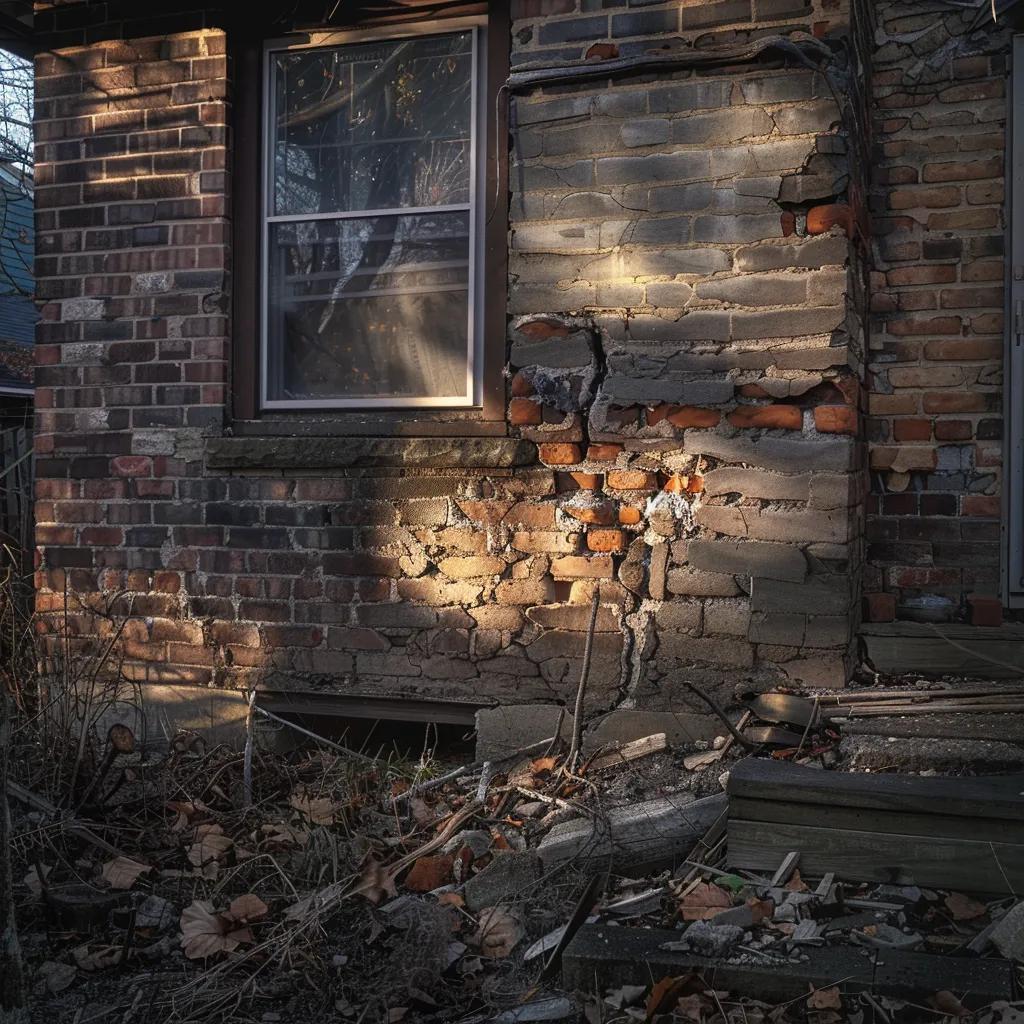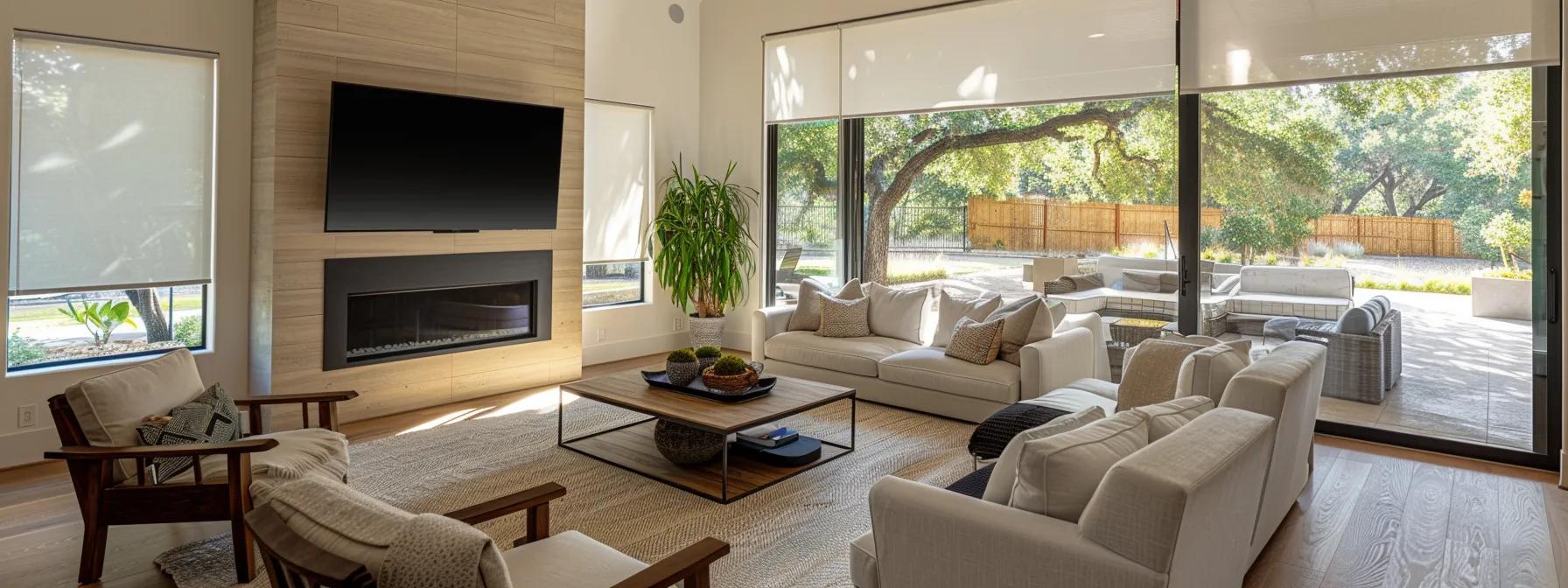Understanding Foundation Repair Costs: Factors Influencing Pricing Based on Home Age and Size
Why Foundation Repair Costs Differ: Home Age, Size & Soil Conditions
Foundation repair is essential for maintaining a home’s safety and value. Cracks in walls, uneven floors, and moisture issues can signal that the foundation is under stress. Homeowners often wonder why foundation repair costs vary so much. This article examines the factors affecting these costs, focusing on how home size and age play a role. It discusses materials, labor, repair techniques, and additional challenges such as local soil conditions. By the end, readers will understand why costs differ and how to prepare financially for these critical repairs.
How Home Size Affects Foundation Repair Pricing
Larger homes typically have more expansive foundations, driving up repair costs.
Larger Perimeters Mean More Materials and Labor for Repairs
In larger homes, extended foundation perimeters require more materials such as reinforced concrete and waterproofing sealants. The longer linear footage increases both material consumption and labor hours. Contractors often base their estimates on the foundation’s dimensions, meaning that larger perimeters result in higher overall fees.
Increased Structural Load in Bigger Houses and Its Cost Implications
Bigger homes impose more weight on the foundation due to multiple floors, large roofs, and heavy finishes. This additional load accelerates wear and may require advanced repair techniques like underpinning or the installation of additional piers. Structural engineers often incorporate steel reinforcements to ensure stability, further increasing costs.
Accessibility Challenges in Expansive or Multi-Story Home Foundations
Complex layouts or multi-story designs can hinder access to the foundation. Limited access might require specialized equipment, such as man-lifts, and sometimes even the removal of interior finishes or landscaping. These challenges raise labor costs and make addressing issues like water intrusion or soil settlement more labor-intensive and expensive.
Comparing Repair Expenses for Small Versus Large Home Foundations
Smaller homes generally have less foundation area and fewer complications, leading to lower repair costs. In contrast, larger homes may demand extensive remediation, improved drainage, or advanced waterproofing systems. Homeowners must consider their home size when budgeting, as larger foundations need a greater resource allocation.
Foundation Repair Pricing Variances Based on Square Footage
Repair costs are often estimated by the square footage of the affected area. A modest 1,500‑square‑foot home typically incurs lower costs than a 3,500‑square‑foot house, which may have diverse issues across different sections. Contractors sometimes use segmented pricing based on zones of the foundation, so a detailed inspection is crucial for an accurate budget.
The Influence of Home Age on Foundation Repair Expenses
Older homes require extra attention due to material degradation and outdated construction methods.
Common Foundation Problems in Older Homes and Associated Repair Costs
Homes built decades ago are prone to settlement, moisture seepage, and other deterioration issues. Older foundations often develop cracks, bowing walls, or uneven floors. Remediation techniques like mudjacking or full-scale underpinning are frequently needed, and the labor is more intensive because repairs must respect the home’s historical features.
Material Degradation in Aging Foundations and Its Impact on Pricing
Over time, materials such as poured concrete or concrete block naturally degrade from freeze-thaw cycles, moisture infiltration, and chemical reactions in surrounding soil. Often, damaged segments must be completely replaced rather than merely patched. Replacing degraded concrete with reinforced, high-grade material adds notably to repair costs.
Outdated Building Codes in Older Properties Complicating Repair Costs
Older homes were built under outdated codes. Repairing these foundations often requires retrofitting to meet current standards, which may include new drainage systems or upgraded reinforcements. These compliance-driven modifications increase material needs and labor costs, thus raising the overall expense.
Foundation Repair Cost Considerations for Newer Constructions
Newer homes benefit from modern construction techniques and durable materials. While they can still face issues from unforeseen soil movement or poor site conditions, repairs typically involve less extensive work and lower labor costs compared to older constructions.
How Foundation Repair Pricing Differs for Historic Versus Modern Homes
Historic homes frequently require specialized repair strategies to maintain their architectural integrity. Custom underpinning and artisan craftsmanship are sometimes necessary to preserve decorative elements. As a result, repair pricing for historic homes tends to be higher compared to modern constructions.
Common Foundation Issues and Their Repair Cost Variations by Home Profile
Foundation problems and repair costs vary based on a home’s size and age.
Addressing Settlement Repair Costs Relative to House Size and Age
Settlement, or the downward shifting of a foundation, is common in older and larger homes. Minor settlement might be corrected using localized epoxy injections, while significant settlement can require underpinning. Varied settlement across sections of a house increases labor intensity, and advanced diagnostics like laser scanning may be used to pinpoint issues, adding to cost.
Wall Crack Repair Pricing Influenced by Home Age and Structural Scale
Cracks in walls are more frequent and severe in older homes. While modern homes might only need simple sealing for minor cracks, older structures could require carbonfiber straps or steel reinforcements. The overall cost is also affected by the length and thickness of the walls involved.
Costs for Bowing BasementWall Repairs in Different Sized and Aged Homes
Bowing basement walls, caused by lateral soilpressure, are prevalent in both older and larger homes. Repair usually involves installing steel or carbonfiber braces. In larger homes, several walls may need reinforcement, and additional excavation to alleviate soilpressure further increases costs.
Floor Leveling Expenses and Their Connection to Home Age and Dimensions
Uneven or sloping floors indicate underlying foundation issues. Floor leveling—using methods like concrete leveling or polyurethane foam injections—restores a level subfloor and structural integrity. Larger homes require more materials and labor, and older homes might need extra work to address hidden moisture or degraded subfloor materials.
Water Intrusion Repair Costs Varying With Foundation Age and Home Size
Water intrusion can lead to mold growth and structural weakness. In older homes, failed water barriers may necessitate complete replacement of damaged materials. Larger homes with expansive basements often need comprehensive waterproofing systems that include interior drainage, sump pump installation, and exterior coatings, driving up the repair cost.
Repair Methods and How Their Costs Scale With Home Age and Size
Different repair methods scale in cost according to the home’s size and age.
Piering System Costs Adjusted for Your Home’s Dimensions and Foundation Age
Piering involves inserting steel or concrete piers to redistribute a foundation’s weight and correct settlement issues. Larger homes require more piers and more complex installation. If an older home’s foundation is heavily degraded, higher-quality piers may be necessary, increasing overall costs.
Underpinning Expenses for Different Home Ages and Structural Footprints
Underpinning strengthens the foundation by extending its support. Older homes, which may have extensively degraded materials, and larger homes, with a broader structural footprint, require more underpinning. The labor and materials needed for modern underpinning techniques notably drive up costs.
Polyjacking Price Points Relative to House Scale and Foundation Condition
Polyjacking (or slabjacking) involves injecting polyurethane foam under a concrete slab to correct minor settlement issues. This method works well for newer or smaller homes; however, in larger homes or those with extensive damage, the increased volume of material and labor makes polyjacking more costly. In some cases, it may need to be combined with other repair measures.
Waterproofing Solution Costs Based on Home Size and Foundation Age
Waterproofing prevents further water damage and involves applying sealants, installing drainage systems, and exterior coatings. Larger homes and older foundations, which may have compromised waterproofing systems, require more extensive treatments. These additional layers and systems significantly increase repair costs.
Full Foundation Replacement Costs for Older or Larger Homes With Severe Damage
When damage is severe, a full foundation replacement may be needed. This is the most invasive option and involves demolishing the existing foundation and building a new one to current standards. Older and larger homes are particularly vulnerable to such drastic measures, leading to high material, labor, and design expenses.
Other Key Elements Determining Your Foundation Repair Investment
Additional factors influence the final repair cost beyond home size and age.
The Severity of Foundation Damage and Its Effect on Overall Price
The extent of damage—such as crack width and structural bowing—directly affects repair strategy and cost. Minor epoxy injections may be sufficient for small cracks, while severe damage can require complex underpinning or full replacements, substantially raising the expense.
Local Soil Conditions and Their Role in Repair Pricing
Soil conditions such as compaction, moisture levels, and expansive clay can cause differential settlement. Homes in areas with challenging soil conditions may need specialized drainage, moisture barriers, or insulation, which increases both material and labor costs.
Choosing a Repair Contractor and Regional Price Variances
Repair costs vary by contractor experience and regional labor rates. Established foundation repair companies may charge premium rates, and regional cost-of-living differences can affect pricing. Obtaining multiple quotes is essential for ensuring competitive pricing for both labor and materials.
Permit Acquisition and Its Contribution to Repair Expenses
Acquiring permits from local authorities adds administrative fees to the overall expense. Permit costs depend on the jurisdiction and project scope and may include additional inspections. These fees, though often small relative to total repair costs, can contribute to the overall budget.
Managing Unexpected Issues During Repairs and Potential Cost Adjustments
Even with careful planning, unforeseen issues such as hidden damage or unexpected soil conditions can arise. Contractors usually add a contingency fee to cover these problems. Homeowners should plan for extra expenses to avoid budget overruns as repairs progress.
Securing Accurate Foundation Repair Cost Estimates Tailored to Your Home
Accurate estimates are key to managing foundation repair work within budget.
Arranging a Professional FoundationInspection for Precise Pricing
A comprehensive foundationinspection identifies both visible and hidden issues using advanced diagnostic tools. This detailed report guides contractors in developing specific repair solutions, ensuring that the subsequent pricing is as accurate as possible.
Inquiring About Costs Specific to Your Home’s Age and Size
Homeowners should request detailed estimates that consider their home’s age, square footage, and unique foundation design. Discussing nuances with contractors helps clarify how different factors, such as soil moisture or outdated construction, affect pricing.
Evaluating Multiple Quotes for Foundation Work on Your Property
Obtaining several quotes enables homeowners to compare the scope, method, and cost details among different foundation repair companies. This strategy ensures that a balanced, cost-effective solution is chosen based on proven expertise and clear service offerings.
Interpreting Repair Estimate Details for Homes of Varying Ages and Sizes
Carefully reviewing estimates, including itemized costs for materials, labor, permits, and contingencies, helps homeowners understand what each repair strategy entails. This breakdown allows for informed comparisons and clearer expectations regarding expense.
Budgeting Effectively for Foundation Repairs Based on Your Home’s Characteristics
Effective budgeting requires planning for expected repair costs as well as a contingency—typically 10%–20% extra—to cover unforeseen issues. A thorough inspection combined with multiple quotes helps homeowners allocate funds appropriately and keep the project on track.
Frequently Asked Questions
Q: How do foundation repaircosts vary between small and large homes? A: Costs depend on the foundation’s perimeter and square footage. Larger homes require more materials and labor, leading to higher expenses.
Q: Why do older homes incur higher foundation repairexpenses? A: Older homes face issues like material degradation and outdated construction methods, which often require extensive repairs such as underpinning or full foundation replacement.
Q: What role do local soilconditions play in foundation repairpricing? A: Soil factors such as moisture levels, compaction, and expansive clay impact foundation stability. Challenging soil conditions necessitate additional waterproofing and drainage solutions, increasing costs.
Q: Is it necessary to get multiple quotes for foundation repairwork? A: Yes, obtaining multiple quotes ensures competitive pricing and helps select a contractor experienced with the specific foundation challenges of the home.
Q: What are common repair methods used for foundation issuesin aging homes? A: Typical methods include piering, underpinning, polyjacking, and comprehensive waterproofing, each tailored to address issues like settlement, wall cracks, or water intrusion.
Q: How can a professional foundationinspectionhelp with cost estimation? A: An inspection uncovers both visible and hidden damage, guiding contractors to provide precise, tailored repair recommendations, which leads to more accurate cost estimates.
Q: Can unexpected issues during foundation repairprojects significantly affect the overall price? A: Yes, unforeseen issues such as hidden damage or unexpected soil conditions can increase costs. Contractors usually include a contingency fee to cover these surprises.
Final Thoughts
Foundation repair costs are driven by factors like home size, age, severity of damage, and local soil conditions. Obtaining professional inspections and multiple contractor estimates is critical to understanding these complexities. By budgeting carefully—including a contingency for unexpected issues—homeowners can protect their investment and ensure long-term structural integrity and value.
Before committing to any repair work, homeowners should review the table above to evaluate the factors that influence foundation repair costs and ensure the chosen solution fits both their needs and budget.


